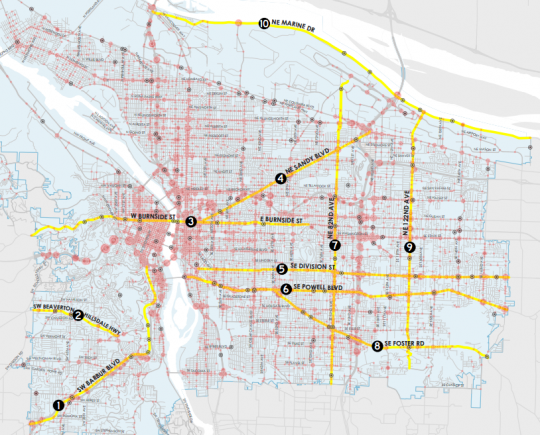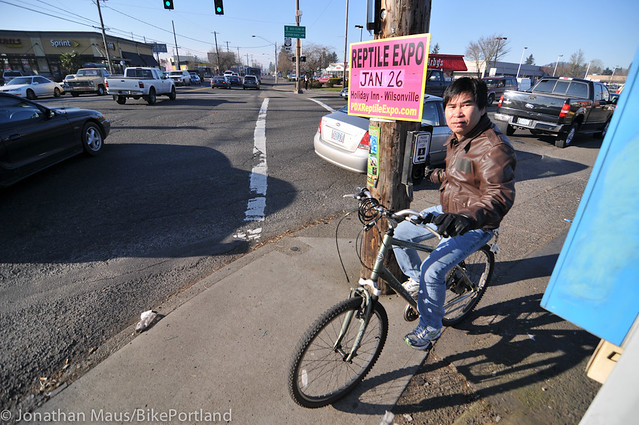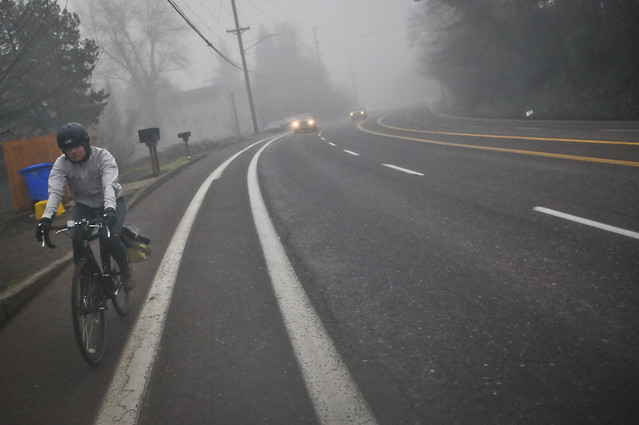
(Image: City of Portland)
Portland’s 10 high-crash corridors would be dotted with radar cameras that automatically detect excessive speeding, under a proposed law due for its first public hearing on Monday.
House Bill 2621 would apply only to the City of Portland, and only on streets with crash rates more than 25 percent higher than other streets with the same speed limit.
“Our 10 high-crash corridors are just 3 percent of Portland’s roadway system by lane-mile, and they account for 51 percent of our pedestrian fatalities,” Portland Bureau of Transportation Safety Specialist Gabe Graff said Wednesday. “You look to other cities that have safer transportation systems than ours — New York, Seattle, Stockholm — they use these systems to great benefit.”
Graff said that if the system were in place, Portland would post signs to warn drivers that an area is photo-enforced. Citations would be reviewed by police and then issued to the addresses of people observed driving more than a few miles over the speed limit.
“Our goal here is not revenue, it’s behavior change,” Graff said. “We want people to know where the system is, because we want people to drive the speed limit.”
State law currently allows the use of radar cameras that capture the speeds of passers-by, and also automated red-light enforcement cameras. But with radar cameras, it requires a police officer to be on site during its operation, and forbids it from being active in one location for more than four hours.
The need to move the cameras around limits their effectiveness; the need for police to be present limits the number that the city can afford to have active.
Someone convicted of speeding 1 to 10 mph over the limit faces a fine of up to $110. For 11 to 20 mph, it’s $160; for 21-30 mph, $260; and for 30 mph or more, $435. Of that total, the state gets the first $60 (fines are regularly reduced or dismissed during the legal process) and any money left is split 50/50 between the state and the enforcing jurisdiction. Graff said that if legislators approve HB 2621, Portland City Council will have a chance to decide how to allocate the city’s share of any net revenue.
Advertisement
Graff said cities that have successfully introduced safety cameras make it clear to constituents that there are big public benefits of reducing traffic speeds.
“The difference between driving 35 mph and 45 mph in a mixed-use intense roadway has dramatic impacts on the likelihood of somebody surviving if you hit them,” he said.
Safety cameras are one of five specific “initiatives” on the City of Portland’s official legislative agenda for 2015.
JoAnn Herrigel, civic involvement coordinator for the advocacy group Elders in Action, said that her organization’s commission voted Wednesday afternoon to endorse the bill, too.
“Anything that will keep cars from running into pedestrians, whether they’re in a wheelchair or on their feet, is something that we’re really interested in seeing happen,” Herrigel said. “The National Highway Traffic Safety Administration finds that photo radar systems reduce crashes in the range of 20 to 25 percent.”
Gerik Kransky, advocacy director for the Bicycle Transportation Alliance, and Noel Mickelberry, executive director of Oregon Walks, both said Wednesday that they too will be signing a letter of support for HB 2621. (If you know of another organization that might want to back such a letter, email Sharon.White@portlandoregon.gov.)
Kransky said that during the 2013 legislative cycle, he had heard a group of state engineers discuss safety cameras.
“They all pointed out that the biggest liability they can see in the program is that when drivers become accustomed to the location of these photo radar illustrations, they will speed anywhere the camera is not,” Kransky said.
Which was, Kransky realized, actually just a way of saying that the cameras are extremely effective.
“They were pointing out that wherever you do have these cameras, you won’t see speeding,” he said.


